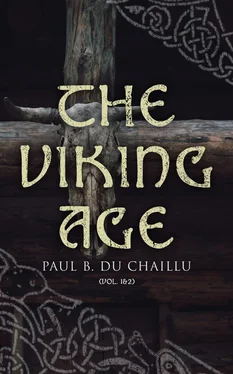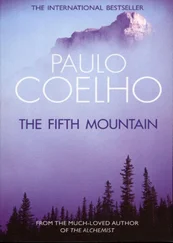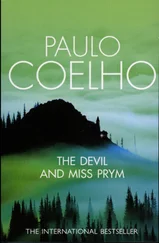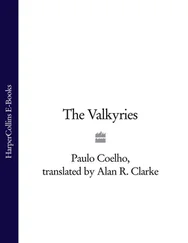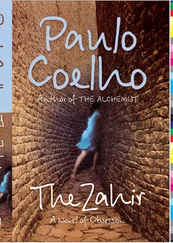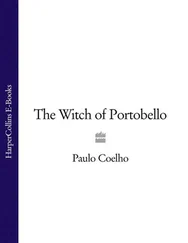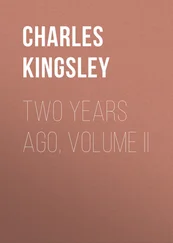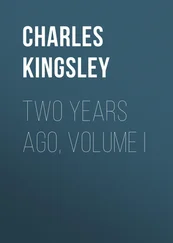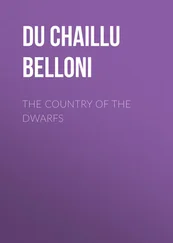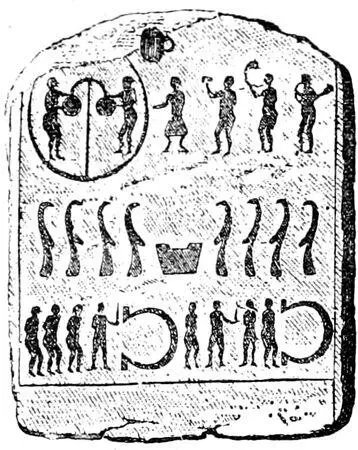
Fig. 28.
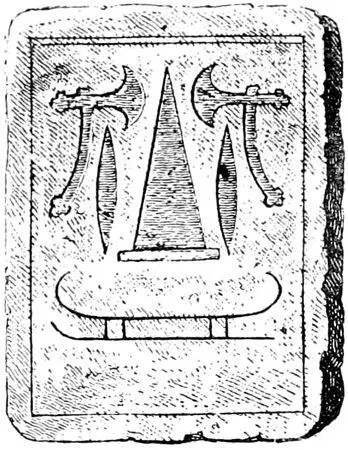
Fig. 29.
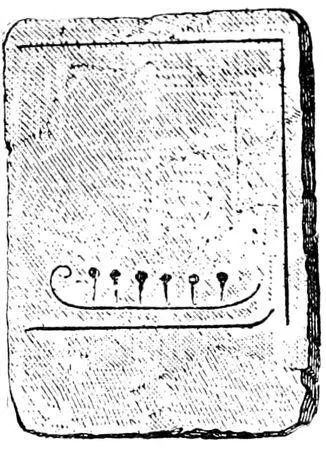
Fig. 30.
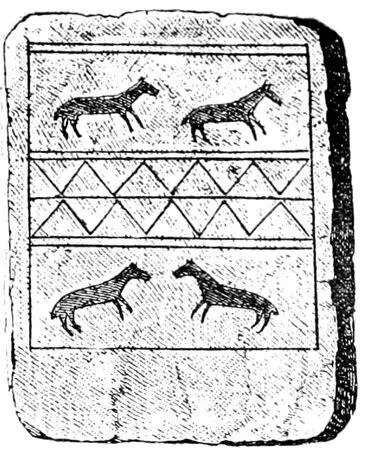
Fig. 31.
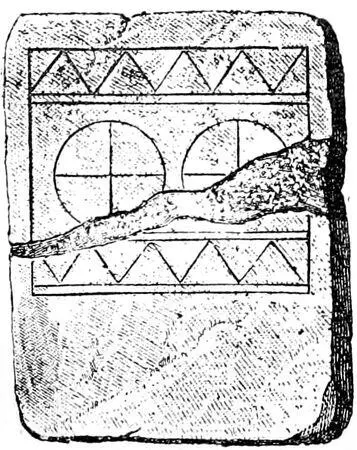
Fig. 32.
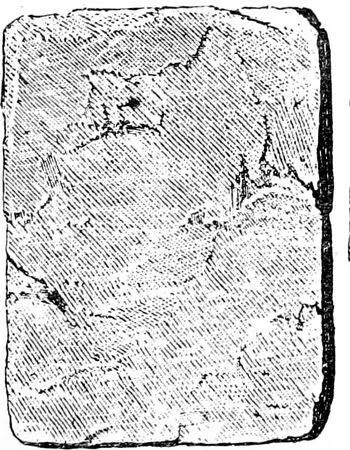
Fig. 33.
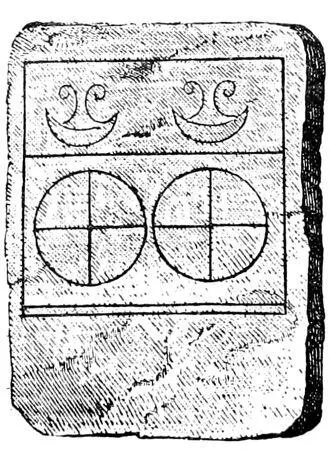
Fig. 34.
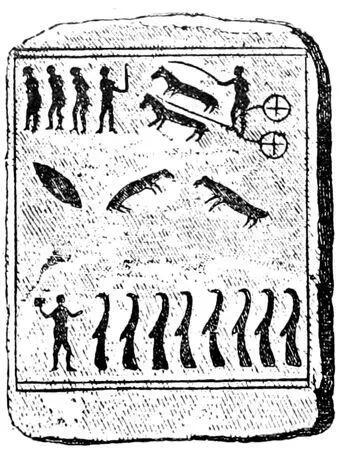
Fig. 35.
Slab, from the Kivik grave. 114
The Kivik grave, like many others belonging to the bronze age situated by the sea, is about 700 feet in circumference. The coffin, of flat upright slabs, was discovered in 1750; its length is fourteen feet; width, three feet. It is formed by four slabs on each side, and one at the north end. These were nearly four feet high, three feet wide, and eight to nine inches thick, and placed side by side. The inner surfaces were more or less smooth, though neither cut nor polished, and on these were the tracings. Two of these stones were lost about seventy years ago. The grave was covered with three slabs, and pointed north and south.
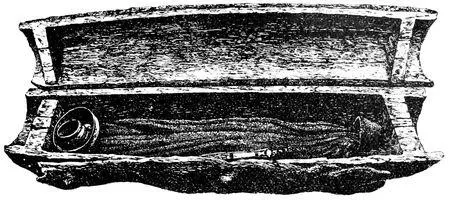
Fig. 36.—Oak coffin. Kongshöi find (Jutland).
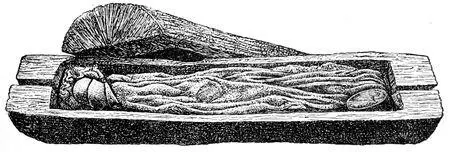
Fig. 37.—Oak coffin, with skeleton body covered with a woollen cloak, Treenhöi, Jutland; one half serving as bed.
In a mound at Havdrup in Ribe amt, Jutland, there were found in 1861 three well-preserved oak coffins. The contents of two had been taken out before the discovery was notified to the authorities, but the third was found in the state shown in the illustration. Near this mound was that of Kongshöi, containing four well-preserved oaken coffins. The contents of these were however not as well preserved as those in the coffins of Treenhöi. At the top of this mound there were discovered clay urns with burnt bones.
In some of these oaken coffins are found wooden bowls with handles, and ornamented with inserted pins of tin.
The articles of dress, found in a most extraordinary state of preservation in the oak coffin, kept from decay no doubt by the tannin in the oak, show how the people of the North dressed well before iron had come into use among them. These are the earliest perfect garments known, and even the latest period to which they belong cannot be far from three thousand years ago, and they may be of a much earlier date.
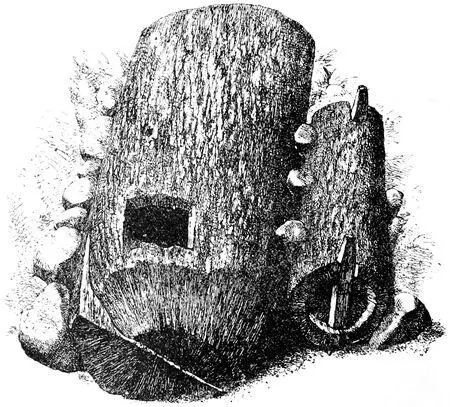
Fig. 38.—Oak coffin, Treenhöi, Jutland; one half serving as bed.
Among the most interesting graves which have given remarkable results in regard to dress are the mounds of Treenhöi by Vandrup, near Kolding, in Jutland.
In a man’s grave was a small cap covering the head of the body, which was wrapped in a deer-skin, composed of several sewn pieces of woven material, and ornamented outside with woollen threads, which had been inserted, and terminating with knots.
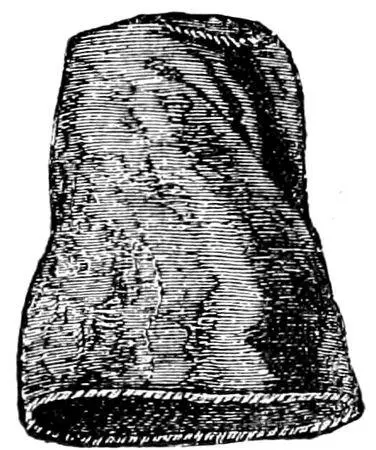
Fig. 39.—Cap.
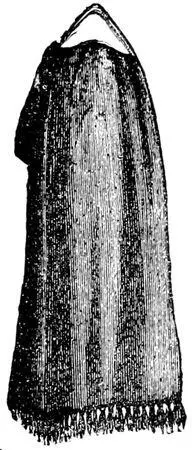
Fig. 40.—Woollen shawl.
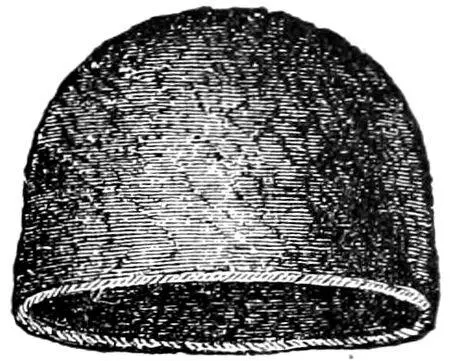
Fig. 41.—Cap.
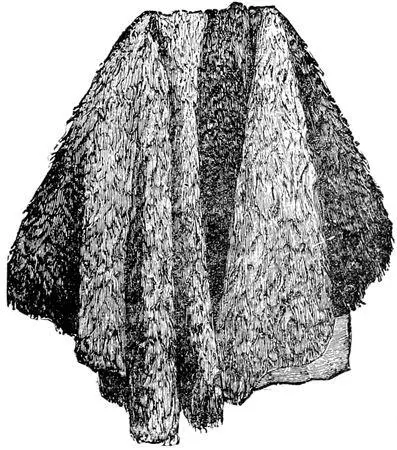
Fig. 42.—Coarse woollen cloak.
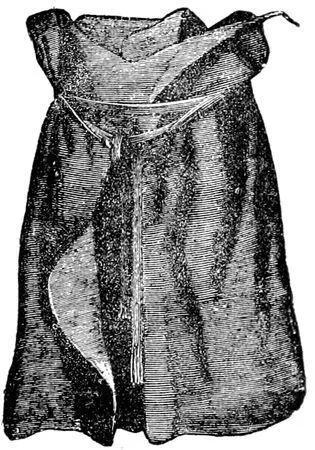
Fig. 43.—Woollen skirt held by a striped band.
Articles of clothing, Treenhöi, Jutland.
On the left side under the cloak lay a bronze sword in a wooden sheath, of lath lined with deer-skin, the hair being inside. The hilt was ornamented by an oval bronze button at its top. There were no traces of leggings or other protection for the legs, but the feet seem to have been protected by strips of wool, and to have had leather shoes or sandals on.

Fig. 44.—Woman’s skirt and bodice of wool, found with bronze ornaments, and a bronze poniard with horn handle by the side of the body which had been wrapped in a deer-skin.—Aarhus, North Jutland.
The graves of women contain daggers, which may possibly imply that the women had been warriors; also large spiral rings, various ornaments, finger-rings, bracelets, glass beads, &c.
Women’s dress of the bronze age seems to have consisted of the skirt and bodice as at the present time, but the men’s clothes were quite different from those of the iron age; in the earlier time trousers were not worn, while we see them in use in the latter.
Many sewing implements of bronze have been found in the graves, the needles like those of the stone age are sometimes made of bone, but many are of bronze; awls were used to pierce the holes in garments that were made of skins, and some peculiar shaped knives have been found which were probably used in the making of skin clothing, or in cutting leather.
In a grave-mound near Aarhus, in North Jutland, a coffin made of two oak logs was found. The bottom of the coffin was covered with an untanned ox or deer-hide. On this lay a large cloak, made of coarse wool and cattle-hair. In the cloak, which was partly destroyed, was wrapped the skeleton of a woman dressed. The hair was long and dark, and a net covered the head, tied under the chin.

Fig. 45.—Profile of mound of the bronze age, with large coffin and unburnt body, and stone cist with cinerary urn containing burnt bones, also three smaller stone cists filled with burnt bones. Dömmerstorf, S. Halland.

Fig. 46.—Mound and sepulchral cist. The stones in this grave were of size of the fist, and formed a pavement of a diameter of about a yard. The urn contained burnt bones, among which were found a bronze awl, and fragments of a bronze saw.
Читать дальше
